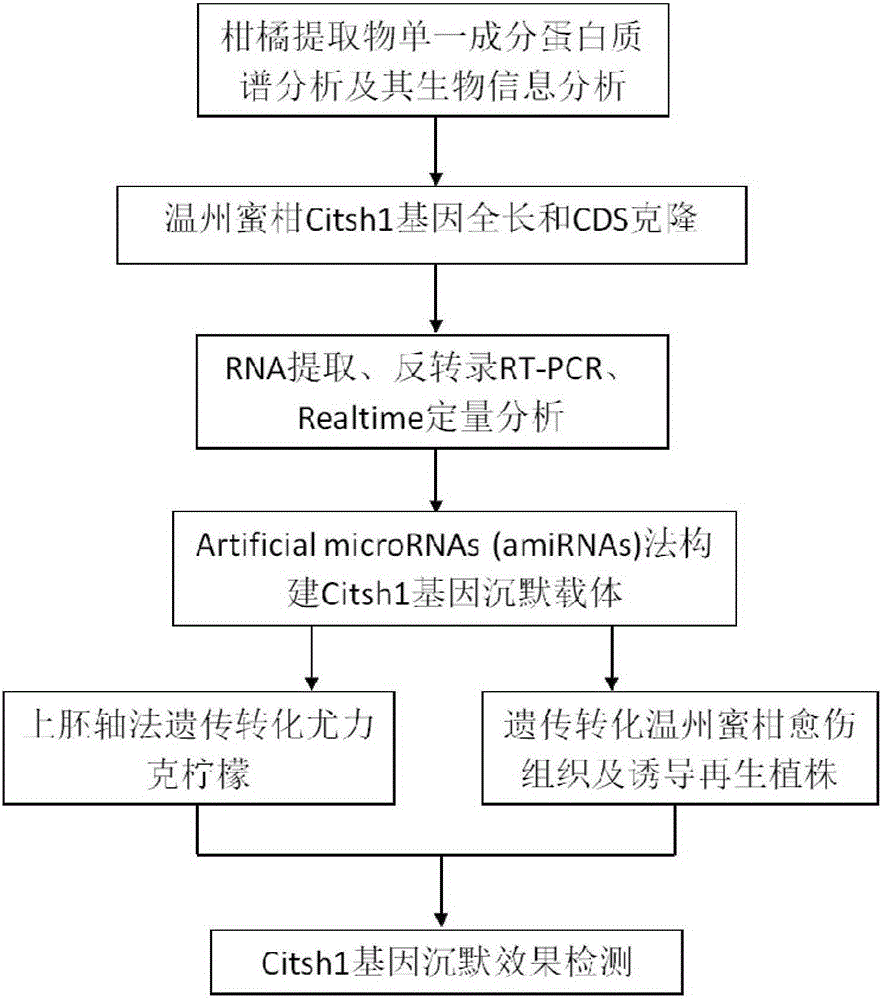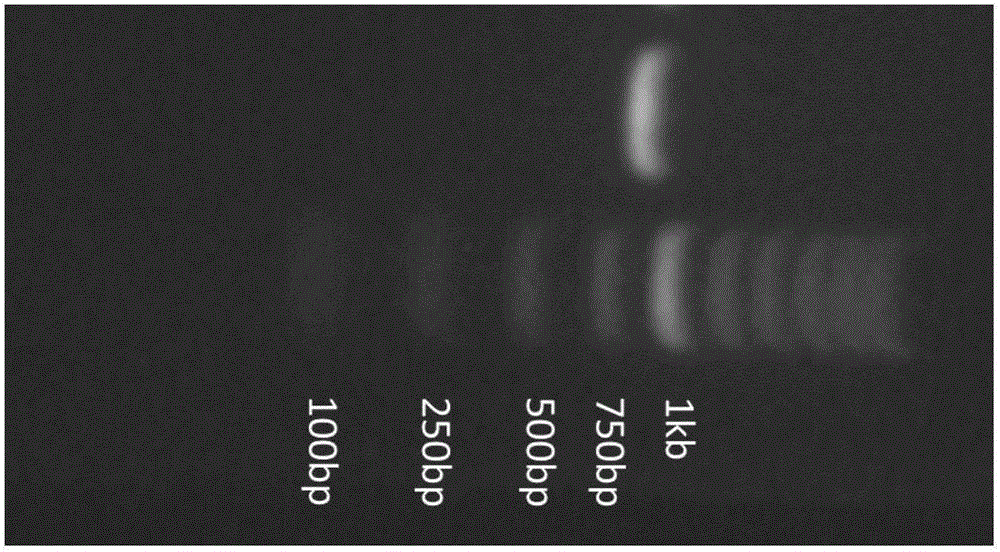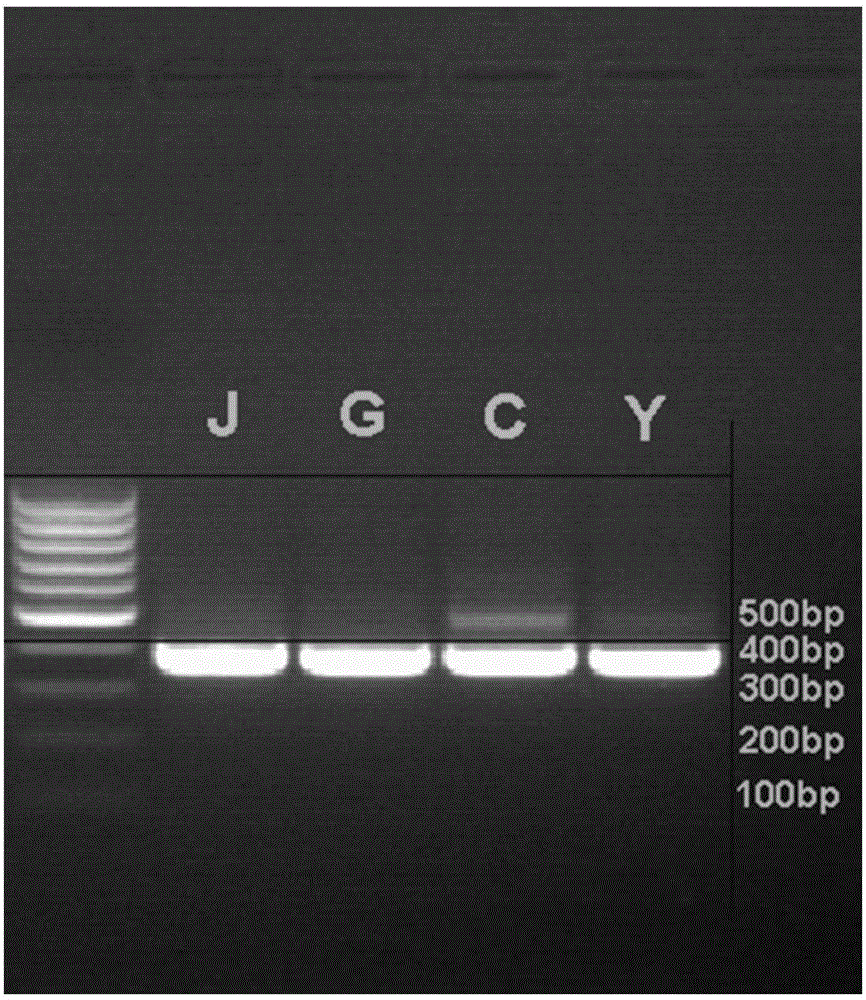Gene causing internal heat of human bodies in rutaceous plants and application of gene
A plant and rue technology, applied in the direction of plant genetic improvement, application, plant peptides, etc., can solve the problems of affecting citrus consumption, reducing citrus evaluation, and reducing citrus preference
- Summary
- Abstract
- Description
- Claims
- Application Information
AI Technical Summary
Problems solved by technology
Method used
Image
Examples
Embodiment 1
[0049] Example 1: Protein spectrum analysis and bioinformatic analysis of single substance Cs8g14040 in citrus "upfire"
[0050] 1. Mass spectrometry analysis of a single substance in citrus "lit"
[0051] Mass spectrometry (MS) is currently the most important proteomic identification technology. The basic principle is to separate and determine the molecular weight according to the difference of the ion mass-to-charge ratio (m / z) after the sample molecules are ionized. Nowadays, there are many methods for biological mass spectrometry, among which matrix-assisted laser desorption ionization (MALDI) / time-of-flight mass spectrometry (TOF) and electron spray ionization mass spectrometry (ESI) are the main ones.
[0052]In this experiment, the single component protein of citrus extract (that is, the natural Citsh1 protein that causes human body to get angry) was processed and then detected by matrix-assisted laser desorption ionization time-of-flight mass spectrometry (MALDI-TOF-M...
Embodiment 2
[0058] Example 2: Cloning the full length of Citsh1 gene and its coding sequence (Coding sequence, CDS)
[0059] Regarding the description of gene naming, the Cs8g14040 homologous gene cloned in Satsuma mandarin in the present invention is named Citsh1, and Cs8g14040.1 corresponds to Citsh1.1, Cs8g14040.2 corresponds to Citsh1.2, and Cs8g14040.3 corresponds to Citsh1.3. Since Citsh1 encodes three transcripts, and the third transcript, Citsh1.3, is the target gene sequence identified by protein spectrum, the Citsh1 used in the follow-up research of the present invention refers to Citsh1.3 unless otherwise specified, which is convenient for unifying the name .
[0060] Embodiment 2 mainly has the following steps:
[0061] 1. Cloning the full length of Citsh1 gene
[0062] 1.1 Extraction of DNA from Wenzhou Satsuma on National Day No. 1
[0063] The young leaves of Wenzhou satsuma were selected and collected from the adult mother trees of the National Citrus Breeding Center of...
Embodiment 3
[0099] Example 3 Construction of Citsh1 gene silencing vector using amiRNA technology
[0100] 1.Molecular design and cloning of amiRNA
[0101] Use the online software WMD3-Web MicroRNA Designer to design amiRNAs targeting the citrus Citsh1 gene. There are two designed amiRNAs, namely amiRNA-1 "TGTTCGTTTAAGCGTTGGCAC" (shown in SEQ ID NO.11) and amiRNA-2 "TAACTTGCAATAGGGTCACCT" (See SEQ ID NO.12), and then obtain amiRNA* and primers I, II, III, and IV for over-lapping PCR (Table 7). Universal primers A and B were paired with the peripheral sequence of MIR319a in pRS300 plasmid respectively.
[0102] Table 7 Construction of overlapping PCR primers for silencing vectors
[0103]
[0104] Using the method of Overlapping PCR (Table 8), A, B, C and D reactions were used to integrate the target fragment into a new DNA fragment (Table 9, 10, 11, 12). The technical route refers to the method provided by WMD3-WebMicroRNA Designer.
[0105] Table 8 Overlapping PCR method
[0106]...
PUM
 Login to View More
Login to View More Abstract
Description
Claims
Application Information
 Login to View More
Login to View More - R&D
- Intellectual Property
- Life Sciences
- Materials
- Tech Scout
- Unparalleled Data Quality
- Higher Quality Content
- 60% Fewer Hallucinations
Browse by: Latest US Patents, China's latest patents, Technical Efficacy Thesaurus, Application Domain, Technology Topic, Popular Technical Reports.
© 2025 PatSnap. All rights reserved.Legal|Privacy policy|Modern Slavery Act Transparency Statement|Sitemap|About US| Contact US: help@patsnap.com



